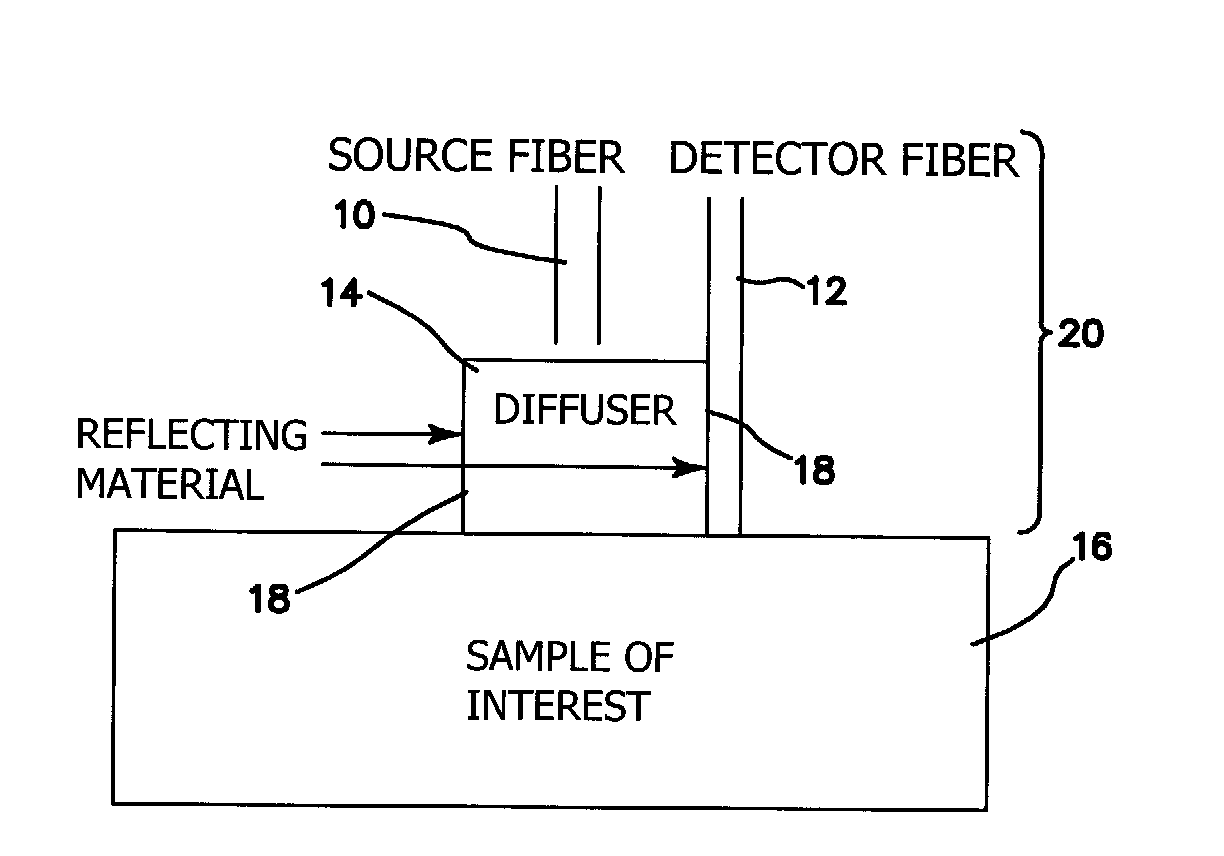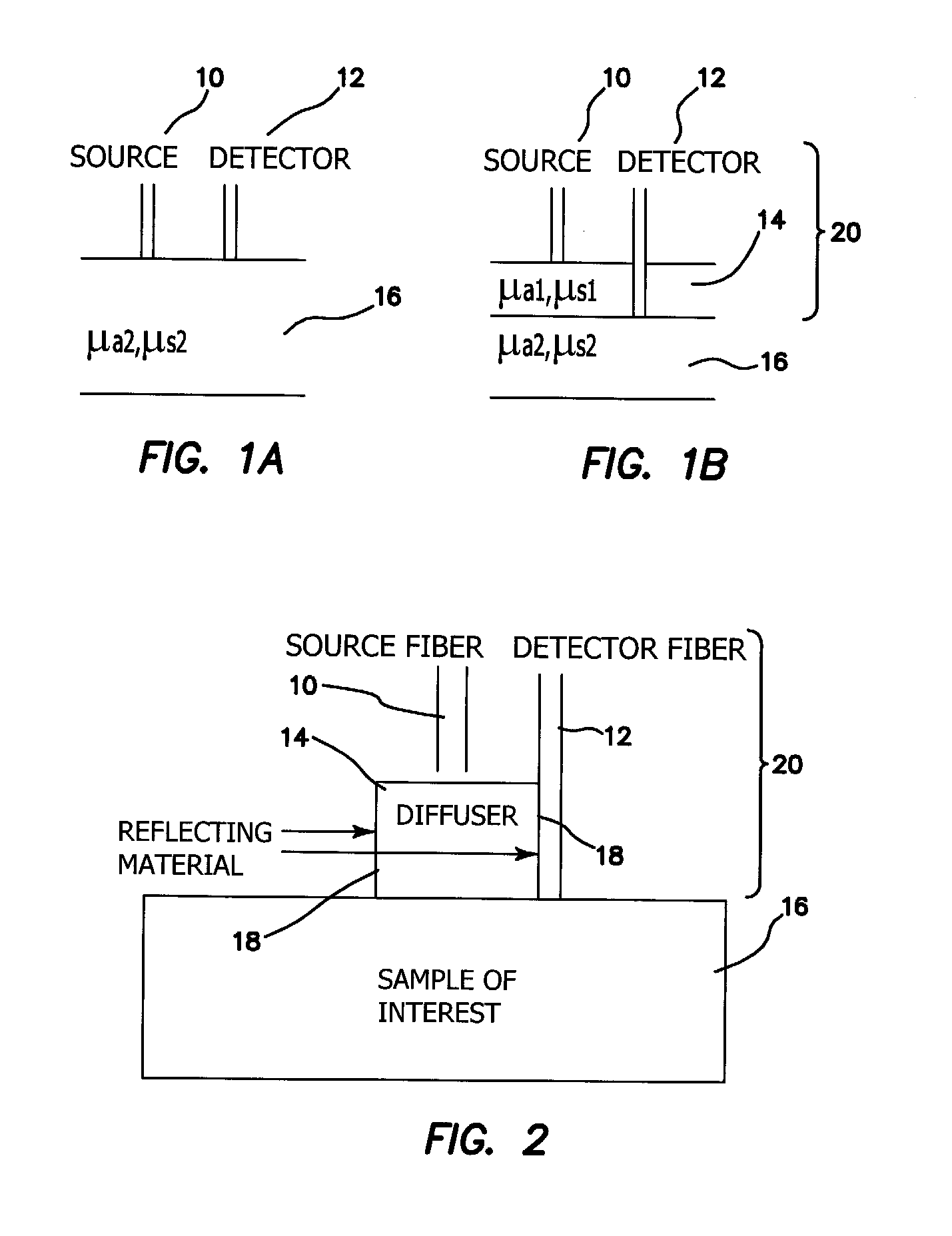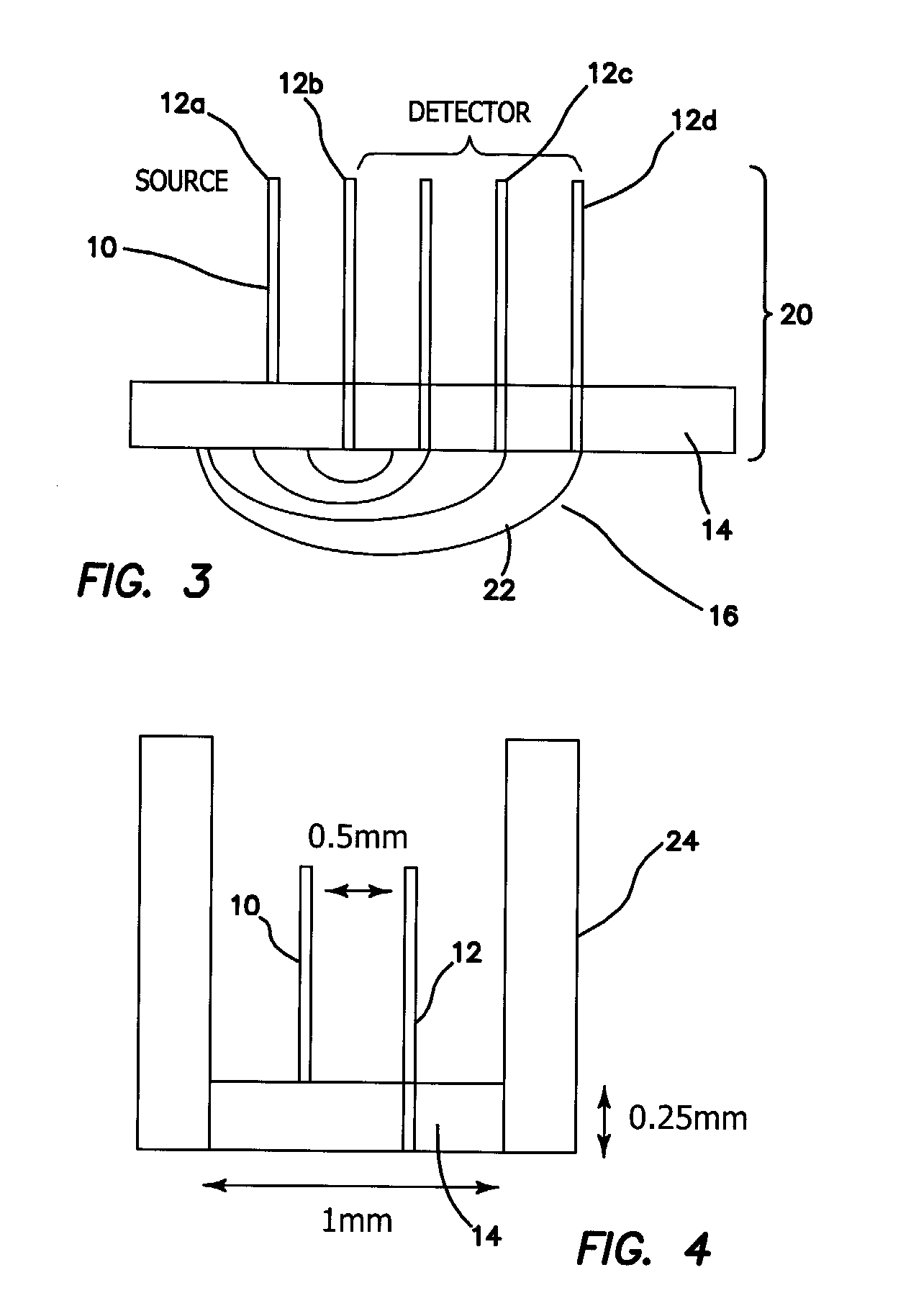Method and Apparatus for Quantification of Optical Properties of Superficial Volumes Using Small Source-to-Detector Separations
a technology of optical properties and source-to-detector separation, which is applied in the field of methods and probe designs, can solve the problems of insufficient model, limited applicability of biopsies of subjects, and inability to take biopsies from subjects
- Summary
- Abstract
- Description
- Claims
- Application Information
AI Technical Summary
Benefits of technology
Problems solved by technology
Method used
Image
Examples
Embodiment Construction
[0038]The probe of the illustrated embodiments is amenable to use in free space or for quantitative measurements of chromophores in tissues that can be reached by an endoscope or similar instrument. We present a method to reduce source-detector separation while maintaining the validity of the diffusion approximation, which employs a high scattering, low absorption layer (μs′=9 mm−1 and μa=0.0015 mm−1 at 661 nm) placed on the surface of the tissue under investigation. This effectively increases the photon path length and allows the source-detector separation to be made arbitrarily small. In order to demonstrate feasibility, we have carried out frequency domain measurements at several wavelengths to recover the optical properties of tissue phantoms, using a two-layer model for which the optical properties and thickness of the upper, highly scattering layer are known.
[0039]In a sense, the approach of the illustrated embodiments of the invention “force” diffusive light propagation on th...
PUM
 Login to View More
Login to View More Abstract
Description
Claims
Application Information
 Login to View More
Login to View More - R&D
- Intellectual Property
- Life Sciences
- Materials
- Tech Scout
- Unparalleled Data Quality
- Higher Quality Content
- 60% Fewer Hallucinations
Browse by: Latest US Patents, China's latest patents, Technical Efficacy Thesaurus, Application Domain, Technology Topic, Popular Technical Reports.
© 2025 PatSnap. All rights reserved.Legal|Privacy policy|Modern Slavery Act Transparency Statement|Sitemap|About US| Contact US: help@patsnap.com



